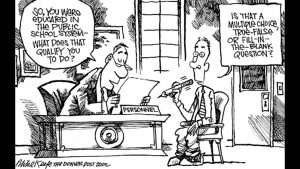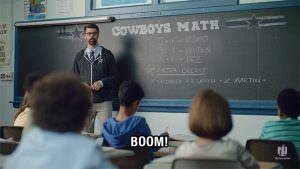Fiere talks about the “banking” method of learning. Every relationship has two parties and in this relationship one party is a narrating Subject (the teacher) and the other is a patient listening object (the student). This is a one way relationship, the students put nothing towards it. It turns the student into a box or container waiting to be filled. The more completely the teacher fills the “container”, the better a teachers he/she is. The more meekly the students allow themselves to be filled, the better students they are.
I don’t agree with this concept of teaching. It is implying that students don’t know anything and can’t input into the lesson and that teachers know all the knowledge and have the correct pieces of informations. I believe, at different ages, students have differents ideas that they can share, and smarts that teachers can learn. When I was younger, my mom (who is a teacher) always said, “Teaching is learning.” She would come home from work and tell me stories of things her students did, and what she learned from them.
I thing to get the utmost knowledge into students is to teach them using a more ‘friendly’ method of teaching.









 I try to incorporate these things into my daily life. Such as I will try to take all my pictures outdoors because I like the way it looks. How nature can spruce up a picture. I especially like taking pictures in front of flowers to make everything look softer. I hope to learn about how overtime art evolves. How culture plays a role into the type of art that was produced over time.
I try to incorporate these things into my daily life. Such as I will try to take all my pictures outdoors because I like the way it looks. How nature can spruce up a picture. I especially like taking pictures in front of flowers to make everything look softer. I hope to learn about how overtime art evolves. How culture plays a role into the type of art that was produced over time.



